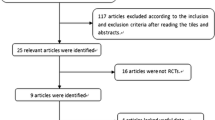Abstract
Overactive bladder syndrome (OBS) is described as urinary urgency with or without incontinence, usually with increased daytime frequency and nocturia in the absence of another identifiable pathological process. Nowadays and despite other alternative therapies, the mainstay of OBS is still the pharmacological approach, mainly with anti-muscarinic drugs. To compare the efficacy of a 30-day solifenacin succinate (5 mg OD) treatment with or without previous medication with trospium chloride, a prostective open, two-arm, parallel group study was conducted for 5 weeks in 40 patients with OBS. The primary endpoint was patient self-assessment of improvement after 30 days of medication. Secondary endpoints included the reduction of the daily number of voids and urgency or involuntary leakage episodes. Adverse reactions and therapeutic stoppage were also evaluated. To be included in the trospium chloride treatment group, patients were required to have been treated with such drug for 1 to 6 months before the present study. Evaluation and efficacy assessment were accomplished using a 3-day bladder diary and an urgency severity scale (USS). Safety assessment was done by recording all the patients’ complaints after starting medication. A total of 40 patients were enrolled for this study, 19 without previous medication and 21 who had already tried trospium chloride. Two patients from the non-previous medication group were excluded. Globally, there was a statistically significant reduction for the USS (2.73→1.73), the daily number of voids (9.5→7.0), of urgency episodes (9.1→4.0) and of involuntary leakage episodes (3.6→1.0) over the 24 h. Six patients had no improvement, four from the previous trospium chloride group and two from the non-previous medication group. Three patients reported side effects, two cases of dry mouth and one case of constipation. One patient dropped out of the treatment due to an unspecified intolerance. Solifenacin succinate 5 mg seems to be effective concerning patients’ self-assessment of improvement and decrease in the mean number of daily voids, urgency episodes and incontinence episodes. This was reported both in patients who have already been medicated with trospium chloride and those who have never taken any kind of medication. Regarding side effects, solifenacin is quite well-tolerated in both groups.



Similar content being viewed by others
References
Milsom I, Abrams P, Cardozo L et al (2001) How widespread are the symptoms of an overactive bladder and how are they managed? A population-based prevalence study. BJU Int 87:760–766
Abrams P, Cardozo L, Fall M et al (2002) The standardization of terminology of lower urinary tract function: report from the Standardization Sub-committee of the International Continence Society. Neurourol Urodyn 21:167–178
Coyne KS, Payne C, Bhattacharyya SK et al (2004) The impact of urinary urgency and frequency on health-related quality of life in overactive bladder: results from a national community survey. Value Health 7:455–463
Zinner NR (2005) Trospium chloride: an anticholinergic quaternary ammonium compound for the treatment of overactive bladder. Expert Opin Pharmacother 6:1409–1420
Rovner ES (2004) Trospium chloride in the management of overactive bladder. Drugs 64:2433–2446
Singh-Franco D, Machado C, Tuteja S, Zapantis A (2005) Trospium chloride for the treatment of overactive bladder with urge incontinence. Clin Ther 27:511–530
Andersson KE et al (2002) Pharmacological treatment of urinary incontinence. In: Abrams P, Khoury S, Wein A (eds) Incontinence. Second International Consultation on Incontinence. Plymbridge Distributors, Plymouth, United Kingdom, pp 489–511
Malone-Lee J, Shaffu B, Anand C, Powell C (2001) Tolterodine: superior tolerability than and comparable efficacy to oxybutynin in individuals 50 years old or older with overactive bladder: a randomized controlled trial. J Urol 165:1452–1456
Abrams P, Malone-Lee J, Jacquetin B et al (2002) Twelve-month treatment of overactive bladder: efficacy and tolerability of tolterodine. Drugs Aging 18:551–560
Cardozo L, Lisec M, Millard R et al (2004) Randomized, double-blind placebo controlled trial of the once daily antimuscarinic agent solifenacin succinate in patients with overactive bladder. J Urol 172:1919–1924
Chapple CR, Rechberger T, Al-Shukri S et al (2004) Randomized, double-blind placebo- and tolterodine-controlled trial of the once-daily antimuscarinic agent solifenacin in patients with symptomatic overactive bladder. BJU Int 93:303–310
Chapple CR, Martinez-Garcia R, Selvaggi L et al (2005) A comparison of the efficacy and tolerability of solifenacin succinate and extended release tolterodine at treating overactive bladder syndrome: results of the STAR trial. Eur Urol 48:464–470
Author information
Authors and Affiliations
Corresponding author
Rights and permissions
About this article
Cite this article
Metello, J., Nogueira, B., Torgal, M. et al. Comparison of the efficacy and tolerability of solifenacin succinate with or without previous use of trospium chloride. Int Urogynecol J 18, 1021–1025 (2007). https://doi.org/10.1007/s00192-006-0271-y
Received:
Accepted:
Published:
Issue Date:
DOI: https://doi.org/10.1007/s00192-006-0271-y




